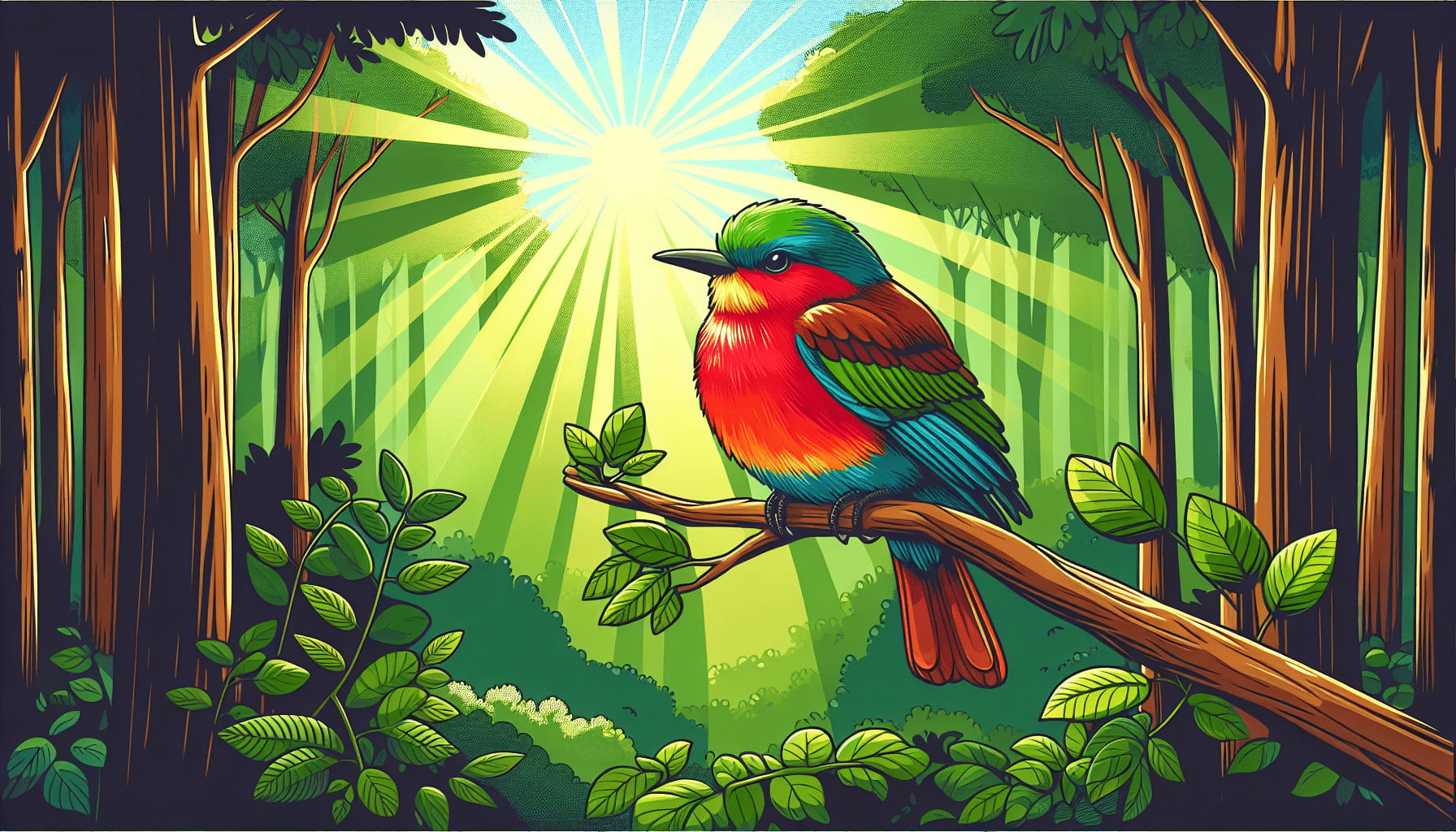In “Beginner’s Guide to Understanding Bird Safety in the Wild,” you embark on a fascinating journey into the captivating world of birdwatching while learning crucial tips and strategies to keep these feathered creatures safe. You’ll discover the essential practices for observing birds without causing them harm, understand the importance of respecting their natural habitats, and get to know how to respond to different bird behaviors to ensure a safe and enjoyable experience for both you and the birds. This guide is your go-to resource for becoming a more conscientious and knowledgeable bird enthusiast. Have you ever wondered what it takes to ensure the safety of birds in the wild? Whether you’re a budding birdwatcher or simply a nature enthusiast, understanding bird safety is crucial to preserving these exquisite avian creatures. Birds play a vital role in the ecosystem, and it’s essential to approach their safety with care and knowledge. Lucky for you, this beginner’s guide will take you through everything you need to know about keeping birds safe in their natural habitats.

Why Bird Safety Matters
Birds are not just beautiful to look at; they are vital to the balance of our ecosystem. They control pests, pollinate plants, and even disperse seeds. Ensuring their safety not only benefits them but also maintains ecological balance.
The Role of Birds in the Ecosystem
Birds contribute to the environment in numerous ways. Some species control the population of insects, rodents, and even smaller birds. Others help in pollination and seed dispersal, making them essential for plant reproduction.
The Impact of Bird Population Decline
A decline in bird populations can have ripple effects across the ecosystem. Less control of pests, reduced pollination, and fewer seeds dispersed means that many aspects of the natural world can suffer. This can ultimately affect human food sources and economic activities.
Common Threats to Birds in the Wild
Understanding what threatens birds in the wild is the first step toward ensuring their safety. From natural predators to human-induced dangers, several factors can jeopardize bird safety.
Natural Predators
Birds face numerous predators in the wild. From larger birds of prey to mammals and reptiles, understanding these natural threats can help you better protect avian species.
| Predator Type | Examples |
|---|---|
| Birds of Prey | Hawks, Eagles, Falcons |
| Mammals | Cats, Raccoons, Foxes |
| Reptiles | Snakes, Larger Lizards |
| Other Birds | Crows, Jays, Larger Birds |
Human-Induced Threats
Human activity poses a significant risk to birds. Deforestation, pollution, and climate change are just a few factors that can negatively impact bird safety.
Deforestation
When forests are cut down, many bird species lose their natural habitat. This not only deprives them of shelter but also food sources.
Pollution
Air and water pollution can have detrimental effects on birds. Toxins can accumulate in their bodies, affecting their health and reproductive capabilities.
Climate Change
Changing weather patterns can disrupt migration routes and breeding seasons, making it difficult for birds to find food and suitable habitats.
Human Recreation
Believe it or not, simple human activities like hiking, camping, and even birdwatching can disturb bird populations. Always remember to respect their space and natural behaviors.
Identifying Safe Habitats
One of the most effective ways to protect birds is by identifying and preserving safe habitats. Here’s what to look for:
Natural Landscapes
Birds thrive in diverse ecosystems—from wetlands and forests to grasslands and coastal areas. Each habitat supports different species, so understanding the specific needs of local birds can help in their preservation.
Local and Migratory Species Needs
Local birds often stay in one area year-round, while migratory birds travel great distances. Be aware of both when considering bird safety measures.
Protected Natural Reserves
Governments and conservation organizations establish protected areas specifically to conserve wildlife. These sanctuaries usually offer a haven for birds and other wildlife, making them ideal spots for bird safety.
Creating Bird-Friendly Spaces
Even if you don’t live near a forest or beach, you can still contribute to bird safety by creating a bird-friendly space at home or in your community.
Backyard Bird Sanctuaries
Turning your backyard into a bird sanctuary doesn’t require a lot of effort. Providing food, water, and shelter can make a huge difference.
Providing Food and Water
Bird feeders and bird baths can attract a variety of species. Make sure to keep them clean and filled.
| Item | Recommendations |
|---|---|
| Bird Feeders | Use seeds, suet, nectar, and fruits |
| Bird Baths | Place in shaded, safe spots; change water regularly |
Planting Native Plants
Native plants are more suited to local bird species and can offer natural food sources and shelter. Research which plants are best for the types of birds in your area.
Community Involvement
You can also encourage your community to take steps toward bird safety. Organize local cleanups, advocate for green spaces, and raise awareness about the importance of bird safety.

The Importance of Legal Protection
Many countries have laws aimed at protecting bird species. Understand these legal frameworks to know how they contribute to bird safety.
Endangered Species Acts
Laws like the U.S. Endangered Species Act provide legal protections for birds that face extinction. These laws often include measures to protect habitats and regulate hunting and trade.
Migratory Bird Treaties
International treaties often govern the protection of migratory birds. These agreements ensure that birds have safe passage and habitats, even when they cross international borders.
Local Legislation
Check your local laws and regulations regarding bird protection. Many regions have specific rules aimed at conserving wildlife.
Ethical Birdwatching Practices
Birdwatching is a fantastic way to connect with nature, but it’s crucial to do it responsibly. Here are some tips for ethical birdwatching:
Keep a Safe Distance
Always observe birds from a distance. Getting too close can disturb them and disrupt their natural behaviors.
Avoid Nest Disturbance
Nests are vital for bird reproduction. Never touch or disturb a bird’s nest, as this can lead to abandonment or predation.
Use Appropriate Gear
Binoculars and spotting scopes can help you enjoy birdwatching without getting too close. Recording equipment should be used discretely to avoid startling birds.
The Role of Technology in Bird Safety
Technology has made it easier than ever to engage in bird conservation efforts. From apps to tracking devices, here’s how tech can help protect birds.
Birdwatching Apps
Several apps can help you identify bird species, log sightings, and even report injured birds. These tools make it easier to engage in responsible birdwatching.
Tracking Devices and Research
Scientists use tracking devices to monitor bird movements and behaviors. The data collected can inform conservation strategies and policies.
Social Media and Advocacy
Social media platforms can be powerful tools for raising awareness about bird safety. Join birdwatching groups, follow conservation organizations, and share information with your network.
Educating Yourself and Others
Knowledge is power, and the more you know about birds and their safety, the better you can protect them. Here’s how to educate yourself and others:
Books and Online Courses
Countless books and courses are available to help you learn more about bird safety. Consider enrolling in a course or reading up on the subject.
Workshops and Seminars
Many organizations offer workshops and seminars on birdwatching and conservation. Attend these events to gain firsthand knowledge from experts.
Volunteering
Volunteering with conservation organizations can provide practical experience in bird safety. Whether it’s participating in bird counts or helping with habitat restoration, your efforts can make a significant impact.
Common Myths and Misconceptions about Bird Safety
When it comes to bird safety, misinformation can be as harmful as inaction. Let’s debunk some common myths:
Birds Don’t Need Human Help
While birds have survived for millennia without human intervention, modern threats like climate change and deforestation necessitate our help.
Bird Feeders Make Birds Dependent
Bird feeders supplement a bird’s natural diet but don’t make them entirely dependent on human-provided food. Varying the types of food can encourage a balanced diet.
Birds are Resilient and Don’t Suffer from Environmental Changes
Birds may appear resilient, but environmental changes severely impact their survival and reproduction capabilities. Climate change, for instance, already affects migration patterns.
Resources for Further Learning
If you’re eager to dive deeper into the realm of bird safety, several organizations and resources can help. Here are some to consider:
Conservation Organizations
Groups like the National Audubon Society, BirdLife International, and local wildlife conservation organizations offer invaluable resources and opportunities to get involved.
Online Communities
Join online forums and social media groups dedicated to birdwatching and bird conservation. These communities can offer support, share tips, and help answer your questions.
Academic Journals
For those who are more academically inclined, numerous scientific journals focus on ornithology and conservation. These publications often provide cutting-edge research and findings.
Conclusion
Understanding bird safety in the wild is more than just a hobby; it’s a commitment to preserving the delicate balance of our ecosystem. By learning about the threats birds face, identifying safe habitats, and adopting ethical practices, you can make a meaningful impact. Use technology wisely, educate yourself and others, and debunk common myths to be a more effective advocate for our feathered friends. So, next time you hear the sweet chirping of a bird, you’ll not only appreciate its beauty but also understand the significant role you play in keeping it safe. Happy birdwatching!
